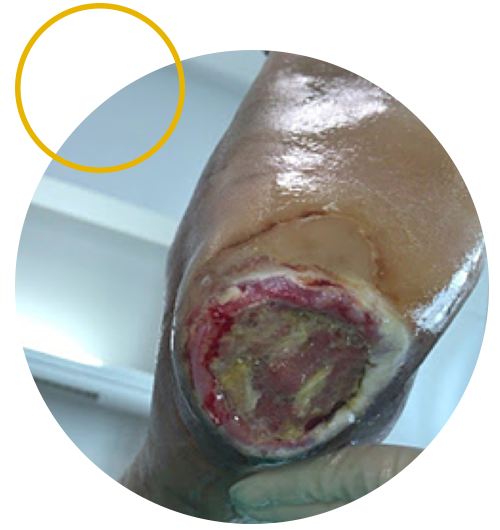Pressure Ulcers or bed sores can happen to anyone. However, they usually affect people confined to bed or who sit in a chair or wheelchair for long periods of time. Pressure ulcers are typically red and swollen and may have pus coming out of the wound. They are terribly painful. For those in wheelchairs, bedsores often occur on skin on the tailbone or buttocks, shoulder blades and spine as well as the backs of arms and legs. Bedridden patients may get it on the heels, ankles and behind the knees as well.

Risks
Risks are higher for those with medical conditions that affect blood supply, make skin more fragile or cause movement problems such as diabetes, peripheral arterial disease, kidney failure, heart failure, multiple sclerosis (MS) and Parkinson’s disease.
Causes
Constant pressure on any part of your body that can lessen the blood flow to tissues is one of the causes of pressure ulcers. It can be caused by friction as well which occurs when the skin rubs against clothing or bedding. The third cause of this ulcer is called shear. Shear occurs when two surfaces move in the opposite direction. For example, when a bed is elevated at the head, you can slide down. As the tailbone moves down, the skin over the bone might stay in place cause a wound.
It is important to stop pressure ulcers from getting worse and help them heal by moving and regularly changing your position, using dynamic mattresses and cushions that have a pump to provide a constant flow of air and eating a balanced diet. Treatment includes cleaning the wound and removing damaged tissue (debridement).